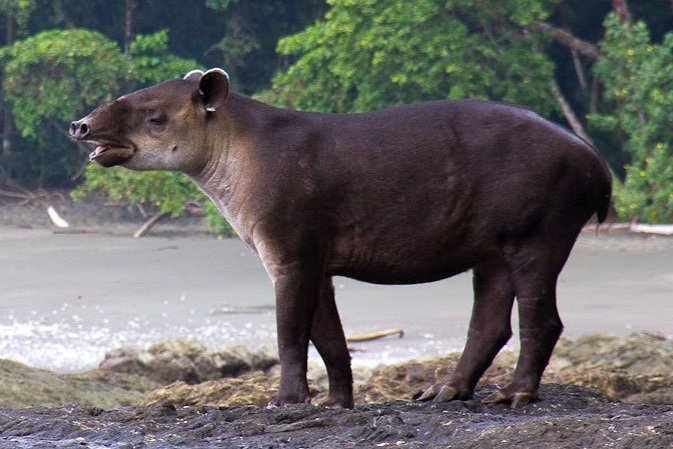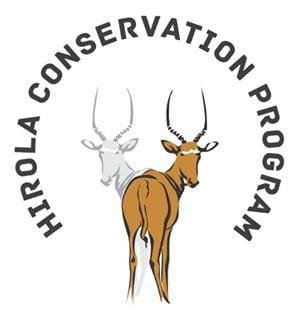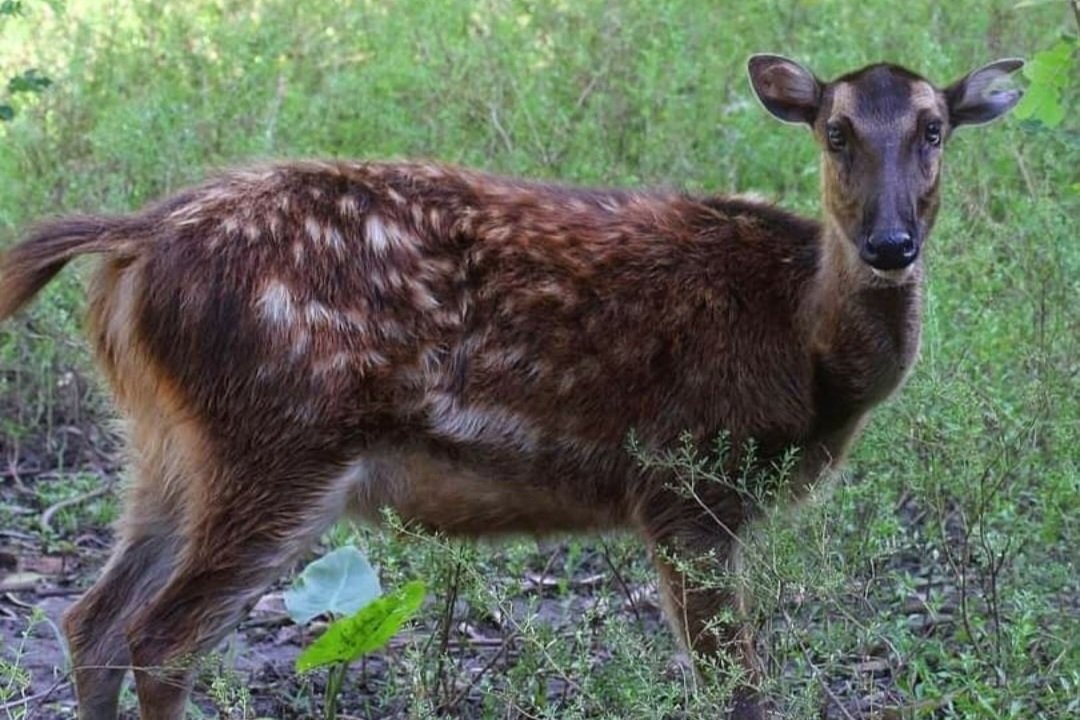TAG-Reviewed Conservation Projects
Supporting the conservation of ungulates in the wild is a key mission of AZA Ungulates. The projects and partners below have been reviewed for impact and merit by the Ungulate TAGs.
Do you know the species you’d like to support in the wild, but not sure which conservation organizations work with that species? Below is an extensive list of active conservation projects (with links to their respective websites), and the corresponding species associated with each project. Although these projects have all been TAG-reviewed, we encourage each institution to evaluate prospective programs themselves.
By using the search feature of your device, you can locate the common name of species you’re searching for.
Additional project suggestions are always welcome. Please fill out the application form and send to azaungulates@gmail.com to begin the review process.
There is also a list of IUCN Specialist groups under the Conservation & Science menu above.
SAFE: Giraffe
AZA SAFE focuses the collective expertise of accredited zoos and aquariums to save species, using conservation action, public engagement, and wildlife care expertise. The Ungulate TAGs proudly support the Giraffe SAFE program.
SAFE: Black Rhino
The Rhino SAFE program is currently in development. In the meantime, the AZA community is helping to reduce demand for rhino horn and raise money to support black rhino habitat conservation, the two greatest threats to this species.
International Rhino Foundation
Vision: A world where rhinos thrive in the wild.
Mission: To ensure the survival of rhinos through strategic partnerships, targeted protection, and scientifically sound interventions.
Core Values: Throughout its 30-year history, the International Rhino Foundation has supported and managed rhino conservation projects in Africa and Asia. Our core values — integrity, collaboration, adaptability, sound decision-making and commitment — are at the heart of everything we do.
Location: Africa (Namibia, South Africa, Zimbabwe), Asia (India, Java, Nepal, Sumatra, Vietnam)
Main impact: white rhinoceros, black rhinoceros, greater one-horned rhinoceros, Sumatran rhinoceros, Javan rhinoceros
Tapir Specialist Group
The Tapir Specialist Group, a unit of the IUCN Species Survival Commission, strives to conserve biological diversity by stimulating, developing, and executing practical programs to study, save, restore, and manage the four species of tapir and their remaining habitats in Central and South America and Southeast Asia. The TSG and the Association of Zoos and Aquariums (AZA) Tapir Taxon Advisory Group (TAG), the main organizers of the Second International Tapir Symposium, together with the European Association of Zoos and Aquaria (EAZA) Tapir Taxon Advisory Group (TAG) and the Tapir Preservation Fund (TPF), are the key groups working on developing and implementing tapir research, conservation and management programs. An important aspect of the mission of these four groups is to contribute to the development of a coordinated international conservation strategy for tapirs.
Location: Argentina, Brazil, Colombia, Costa Rica, Ecuador, French Guiana, Guatemala, Honduras, Indonesia, Malaysia, Mexico, Myanmar, Nicaragua, Peru
Main impact: Baird’s tapir, lowland tapir, Malayan tapir, mountain tapir
AFRICA
Giraffe Conservation Foundation
Focused on all four giraffe species in 18 African countries, the Giraffe Conservation Foundation (GCF) manages and provides support for conservation and giraffe initiatives. GCF conducts population surveys, coordinates translocations with local partners and governments, provides support to de-snaring and anti-poaching efforts, and educational initiatives, in addition to many more projects.
Location: Africa (18 countries)
Main impact: All giraffe species (Masai (Luangwa, Masai), Northern (Kordofan, Nubian, West Africa), Reticulated (Reticulated), Southern (Angolan, South African))
Grevy’s Zebra Trust
Established in 2007, Grevy’s Zebra Trust (GZT) is the only organization that is 100% dedicated to the conservation of the endangered Grevy’s zebra. Located in Kenya, GZT partners with local communities in the Wamba, El Barta, and Laisamis regions, through community-science based population monitoring and co-designing solutions to species threats. Their flagship program, the Grevy’s Zebra Scout Program, started in 2003 to monitor Grevy’s zebra populations and to encourage positive attitudes towards the unique species. Since then, they have developed several projects to conserve Grevy’s zebras and utilize local knowledge and skills.
Location: Kenya
Main impact: Grevy’s zebra
Hirola Conservation Programme
HCP is an indigenous, non-profit organization based in Garissa County, Kenya. The program is primarily dedicated to the conservation of hirola antelope (Beatragus hunteri) but also aims to protect all wildlife and habitat within their area. The project originated from a global concern about the decline in hirola populations coupled with a limited conservation effort, as the hirola occur along the border regions and past conservation efforts had been limited to opportunistic field efforts.
Location: Kenya
Main impact: hirola
MELCA – Ethiopia
MELCA – Ethiopia is an Ethiopian organization that focuses on agricultural, environmental, ecological, and community empowerment projects. MELCA – Ethiopia's primary focuses are to address social and ecological changes within local communities and environments and to help create and maintain sustainable environments and communities. They work with local communities, governments, and stakeholders to effectively manage ecological preserves and community conserved areas to maintain the local biodiversity.
Location: Ethiopia
Main impact: agro-ecology, environmental governance, eco-friendly livelihoods promotion, and child, youth and women empowerment, whole population, health and environment (PHE)
Northern Rangelands Trust
The Northern Rangelands Trust (NRT) is a membership organization owned and led by the 43 community conservancies it serves in Kenya (northern and coastal regions) and Uganda. NRT was established as a shared resource to help build and develop community conservancies, which are best positioned to enhance people’s lives, build peace and conserve the natural environment.
Location: Kenya
Main impact: African elephant, hirola, black rhinoceros, Rothschild’s giraffe, reticulated giraffe, eland, beisa oryx, gerenuk, lion, cheetah, wild dog, Grevy's zebra, plains zebra, African buffalo, common zebra, tana river red colobus, tana crested mangabey, sea turtle
Mentions: impala, spotted hyena, leopard, baboon, crocodile, jackal, hippopotamus, striped hyena, warthog
Okapi Conservation Project
The Okapi Conservation Project is dedicated to the protection of the endangered okapi and their habitat through community empowerment.
Location: Democratic Republic of Congo
Main impact: okapi
Sahara Conservation
Sahara Conservation is dedicated to the conservation of the unique ecosystems and landscapes of the Sahara and Sahel and implements initiatives to preserve the natural wealth of the region, such as the protection and reintroduction of endangered species, habitat conservation and protected area management.
With a biome that spans 17 countries in northern Africa, the success of Sahara Conservation relies on its ability to partner with numerous organizations and governments. Sahara Conservation implements one of the largest reintroduction of captive-bred ungulates ever undertaken with the goal of restoring critically endangered desert species, like the addax, dama gazelle and North African ostrich. They are also championing the reintroduction of scimitar-horned oryx, a species that was recently downlisted by IUCN from Extinct in the Wild to Endangered in 2023 thanks largely to their efforts in Chad.
Location: Saharan Africa
Main impact: scimitar-horned oryx, North African ostrich, dama gazelle (addra gazelle), addax, vultures (hooded, Ruppell’s, lappet-faced, Egyptian, white-backed, white-headed, bustards (Arabian, Nubian)
Save Giraffes Now
SGN invests in projects that help preserve giraffe from extinction in ten African countries. All SGN projects on-the-ground are community-led by local people to the maximum extent possible. Currently, they support each of the four species of giraffe – Reticulated, Masai, Northern, and Southern – as well as the people living alongside them. Their projects include giraffe rewilding and reintroduction in Kenya, Niger, and Zambia, giraffe rescue centers and orphanages in Kenya, Botswana, and Zimbabwe, de-snaring, anti-poaching, canine units, and rapid response teams in five countries, and population studies, satellite tracking and applied conservation research projects in South Africa, South Sudan, Tanzania, Kenya, and Uganda.
Location: Botswana, Kenya, Niger, South Africa, South Sudan, Uganda, Tanzania, Zambia, Zimbabwe
Main impact: giraffe (Reticulated, Masai, Northern, Southern)
Tusk - Bongo Surveillance Project
The Bongo Surveillance Project is one of Tusk’s long-standing conservation projects. With a focus on the bongo populations in the Aberdares, Maasai Mau, and Mt. Kenya forests in Kenya, this organization utilizes partnerships with local organizations for their knowledge and expertise. It is estimated that there are less than 100 adult individuals that remain in these fragmented habitats. The Bongo Surveillance Project has been working since 2004 to protect the wild population and help establish local community projects in the regions near known bongo populations.
Location: Kenya
Main impact: eastern mountain bongo
Wild Nature Institute: Tarangire Ungulate Observatory (TUNGO)
The Wild Nature Institute’s Tarangire Ungulate Observatory (TUNGO) uses science-based approaches to identifying ungulate populations that are steady or declining and discovering why, identifying migratory patterns, and determining where rare species are located. TUNGO currently has studies focused on 20 different ungulate species located in the Tarangire ecosystem in northern Tanzania. Their goal is for their research to provide reliable information to make educated species management plans and enable anti-poaching efforts in the region.
Location: Tanzania
Main impact: Masai giraffe, cape eland, African buffalo, fringe-eared oryx, eastern white-bearded wildebeest, Coke's hartebeest, Grant's zebra, greater and lesser kudu, gerenuk, impala, Thomson's gazelle, common waterbuck, bushbuck, Bohor reedbuck, steenbok, klipspringer, bush duiker, and Kirk's dik diks
ASIA
Action Indonesia
Action Indonesia Global Species Management Plan (GSMP) consists of more than 50 conservation organizations from around the world that are collaborating to protect and conserve some of Indonesia’s unique species, specifically the anoa, babirusa, and banteng. They also work alongside the Sumatran Tiger GSMP. Action Indonesia uses the knowledge and expertise of in situ and ex situ professionals to create management plans for long-term sustainability and viability of wild populations of these species.
Location: Global (Europe, Asia, Indonesia, America, Canada)
Main impact: anoa, babirusa, banteng, Sumatran tiger
Asian Wild Cattle
Specialist Group
The IUCN Asian Wild Cattle Specialist Group’s (AWCSG) mission is to promote the long-term conservation of the Asian wild cattle species and their habitats by means of information-sharing, identification of conservation priorities and facilitation/delivery of these priority actions through collaborative conservation work.
The focus of the Specialist Group are Asia's nine wild cattle species — lowland and mountain anoa, banteng, gaur, kouprey, saola, tamaraw, wild water buffalo and wild yak — and their habitats. The AWCSG works towards achieving its mission by Assessing, Planning, and Acting to achieve the greatest impact possible.
Location: Vietnam, Cambodia, Laos, Thailand, Peninsular Malaysia, Myanmar, India, Bangladesh, Bhutan, China, Nepal
Main impact: lowland anoa, mountain anoa, banteng, gaur, kouprey, saola, tamaraw, water buffalo, yak
Nubian Ibex
Dr. Omar Attum is a wildlife biologist and Biology professor at Indiana University Southeast’s School of Natural Sciences. His focus is on the ecology and conservation of a variety of species, including the Nubian ibex. Currently, most of his field work occurs in Egypt and Jordan, although he has also worked with Nubian ibex populations in Saudi Arabia. Dr. Attum brings his research into his classroom and his classroom to his research in Jordan to provide his students with hands-on experience and real-life scenarios to help illustrate concepts he teaches through his courses.
Location: Egypt, Jordan
Main impact: Nubian ibex
The Philippines Biodiversity Conservation Foundation Inc. (PBCFI)
For over 30 years, the Philippine Biodiversity Conservation Foundation Inc. (PBCFI) has been focused on the long-term conservation of the country’s native and endemic wildlife and natural landscapes. Two of the species that they focus on are the Visayan warty pig and the Visayan spotted deer. Currently, they are actively involved in the protected areas of the Central Panay Mountain Range and Mt Agudo Mountain Range in Capiz on Panay Island and Cuernos de Negros Mountain Range and isolated forests patches on the southern section of Negros Island where these species are found. They utilize long-term and locally-based conservation initiatives to develop informational programs and management practices to protect the Philippines’ unique biodiversity.
Location: Philippines
Main impact: spotted deer, Visayan warty pig
Re:Wild Large-antlered Muntjac Program
The large-antlered muntjac is found only in the Annamites ecoregion of Vietnam and Laos. Since its remarkable scientific discovery in 1994, the species has suffered catastrophic population declines as a result of intensive wire snaring across its range. Today, the species is on the verge of extinction. Because of the difficulties associated with significantly reducing snaring pressure, and the ‘extinction vortex’ associated with small, fragmented, and non-viable populations, it is imperative to establish an insurance population as soon as possible. We seek to secure a conservation breeding population of large-antlered muntjac. First, we will conduct targeted camera-trapping surveys in areas of Vietam where large-antlered muntjac are known to survive (i.e. Lam Dong province). There is then a plan to capture individuals and transport them to a recently-established conservation breeding center in central Vietnam. A joint Vietnamese-international team of ungulate handlers, veterinarians, and biologists will oversee all aspects of the capture process and oversee their long term care.
Location: Vietnam, Laos
Main impact: large-antlered muntjac
Save the Saola
The Saola Working Group works collaboratively to conserve Saola in nature, and to leverage Saola as a flagship for conservation of the bio-cultural diversity of the Annamite Mountains as a whole. The SWG embraces the IUCN Species Survival Commission’s One Plan approach to conservation: The One Plan approach to species conservation is the development of management strategies and conservation actions by all responsible parties for all populations of a species, whether inside or outside their natural range
Location: Laos, Vietnam
Main impact: saola
Mentions: tawny fish owl, pygmy slow loris, marbled cat, atlas moth, annam flying frog, big-headed turtle, annamite striped rabbit, malayan moon moth, sunda pangolin, Hodgson’s frogmouth, Laotian giant flying squirrel
True Wild Horse
The Asian Wild Horse Species Survival Plan launched the True Wild Horse campaign in 2014 to raise awareness about Asian wild horses and funding for their conservation. The SSP helps to ensure the survival of the Asian wild horse through cooperative breeding with all North American zoos and aquariums, maintaining a genetically diverse and demographically stable population. Current projects in Asia ensure the continued growth of self-sustaining populations of Asian wild horses by mitigating conflicts between humans and wildlife, robust science-based population monitoring and research, and expanding habitat and population sizes.
Location: Mongolia/China
Main impact: Asian wild horse
Wild Camel Protection Initiative
The sole aim of the Wild Camel Protection Foundation is to protect the critically endangered wild camel (Camelus ferus) and its habitat in the fragile and unique desert ecosystems in the Gobi and Gashun Gobi deserts in north-west China and south-west Mongolia. It is the only charitable environmental Foundation in the world which exclusively has as its aims and objectives the protection of the critically endangered wild camel and its unique desert habitat.
Location: Mongolia, China
Main impact: wild camel
WWF - Central Asian Programme
The endangered Bukhara deer (Cervus elaphus bacrianus), also known as the Bactrian Wapiti, lives in central Asia where habitat loss and poaching, particularly in the 1990’s, led to drastically declining population numbers. In 1999, it was estimated that only 350-500 deer were left. With the initiation of this project, habitat restoration was a success and now the focus has changed to reintroduction of the species to both restored and historical areas.
Location: Tajikistan, Uzbekistan, Kazakhstan
Main impact: Bactrian wapiti
NORTH & SOUTH AMERICA
El Centro Chaqueño para la Conservación e Investigación
Established in 1987, El Centro Chaqueño para la Convervación e Investigació (CCCI) was established to protect existing Chacoan peccary populations and to create a reintroduction program to help increase wild populations numbers. Overtime, CCCI has expanded to wildlife monitoring, behavioral studies, and conservation programs that also have a focus on South American tapir populations.
Location: Paraguay (+ Argentina, Bolivia, Mexico)
Main impact: Chacoan peccary, lowland tapir
Grupo Especialista en Camélidos Sudamericanos
The South American Camelid Specialist Group (GECS) is comprised of around 35 specialists, actively involved in research, conservation, evaluation and program implementation relating to the sustainable use of vicuñas and guanacos in Argentina, Bolivia, Chile, Paraguay and Peru. The Specialist Group facilitates the study of vicuñas and guanacos with a focus on population ecology, animal welfare, behavioural ecology, genetics, environmental education and rural livelihoods of local communities.
Location: Argentina, Bolivia, Chile, Paraguay, Peru
Main impact: guanaco, vicuña

















































